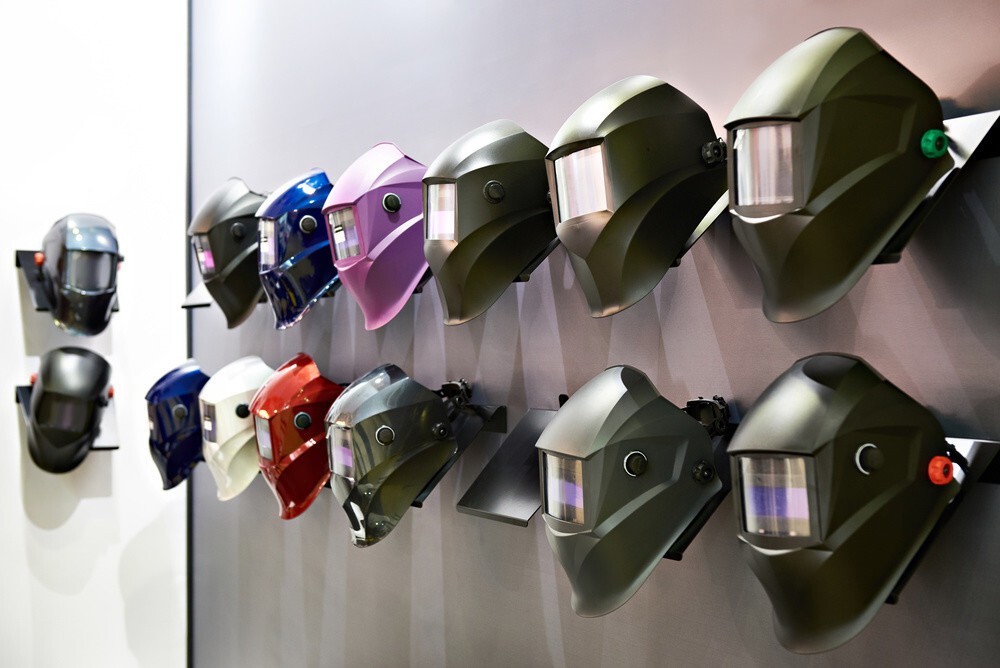A welding helmet is among the most fundamental safety gear; it is something you cannot overlook while performing a welding process.
When it comes to choosing the best welding helmet, welders get confused as a wide variety of helmets are available with different specs, features and qualities.
Typically, good-quality welding helmets are divided into two categories, auto darkening welding helmets, and passive welding helmets.
Although there is a very clear difference in features and qualities of both the helmets, people still find it hard to distinguish between both the types and fail to choose the best one.
For that reason, here we are going to present you with a comprehensive view of auto darkening welding helmet vs. passive welding helmets, and after going through it, you will be able to identify the best suitable option for you, and it will become easier for you to differentiate between them both.

Table of Contents
Auto darkening welding helmet
A welding helmet is a safety gear, which not only protects your face and head but also it gives protection to the eyes. Eyes need to be protected at all times during the welding process.
When we talk about eye protection, the one thing that comes to mind is the quality of the lenses used in a welding helmet. Lenses determine whether a helmet is useful for the protection of the eyes or not.
Auto darkening welding helmet, as clear by the name, comes with advanced lenses technology by which it can automatically turn dark or light depending on the light around it.
It can automatically adjust itself to filter light at different concentrations and intensities.
When it comes to the welding process, the lenses of auto darkening welding helmet get dark when an arc is generated, and it gets clear when you turn off the arc.
In this way, it will not only saves your time to manually turning the lenses but also protects you from the effects of accidental spark lighting.
It can be seen from here that auto darkening welding helmets are convenient and effective, and you will not require to put your helmet on and off to see your work.
Wearing auto darkening helmet, you do not need to remove your helmet, as you will get a clear view of everything during and after the welding work.
The use of auto darkening welding helmet will ultimately increase productivity as the welder will be more focused on work and will not need to set the helmet over and over again.
also makes the welder feel more comfortable and relaxed. Other than the production, accuracy, and preciseness in work will also be enhanced.
Let us see the snap of advantages and disadvantages of having an auto darkening welding helmet; it will give us a clear view of the differences and will help us in deciding the best helmet for us.
- Enhanced performance and stability
- Saves time
- Better protection and comfortability
- Automatic shade control
- Allow better control of welding tools and the process
- Expensive
- Heavyweight
- A limited number of shades
Passive welding helmets
Passive welding helmets offer great eye protection and give you a clear vision and view. A passive welding helmet contains a standard glass viewing lens; however, it does not change dark or light as auto darkening helmet can do.
Passive welding helmets do offer UV rays protection and are comfortable and lightweight. When performing a welding process, you may need to lift and nod the passive helmet several times, which is an uncomfortable experience.
In a passive welding helmet, lenses can be easily replaced or changed as per your requirement, but when doing work, it takes a lot of your time and requires effort.
Unlike auto darkening welding helmets, a passive helmet does not require batteries or any additional thing to work and operate. In terms of cost, passive helmets are cheaper and are easily available.
Here is a quick synopsis of the benefits and the drawbacks of having a passive welding helmet.
- Clear optical view
- Lightweight
- Greater user comfort
- Cheaper and easily available
- No batteries required
- Replacing the lenses is simple
- Easy to repair and fix
- Not suitable for all types of welding work
- Requires continuous manual adjustment
Summary
Now you are aware of the working conditions, benefits, and downsides of auto darkening and passive welding helmets.
It can be clearly seen that auto darkening helmets contain more features and add value to the comfortability of a welder.
Having said that, the price of auto darkening helmets is much higher as compared to welding helmets and are also much heavier in weight.
One main thing about the auto darkening helmet is that it needs to be powered either by batteries or solar, while a passive helmet does not require any of it.
When it comes to repairing or replacing a part, passive helmets are better as the parts are easily available, cheap, and easy to replace. In contrast, the parts of auto darkening helmets are expensive and are difficult to replace.
Although passive helmet offers a clear optical view, auto darkening helmet is not any less. The auto darkening helmet also gives a crystal clear view of everything, even when an arc is generated.
One important thing to notice here is that if you are a beginner, you are going to face a lot of problems and difficulties with a passive helmet, while on the other hand, auto darkening welding helmet will make your work a lot easier.
No doubt, using auto darkening helmet increases overall work performance, as the welder will be more focused on his work and will not require manual adjustment; it will also save the welder from neck pain or injury.
Use of auto darkening welding helmet allows you to work in close working space, as you will not require to set the helmet again and again.
As soon as you are clear with the differences, then on the basis of cost, power source, and the type of welding work you are going to do, you can choose the appropriate welding helmet.
